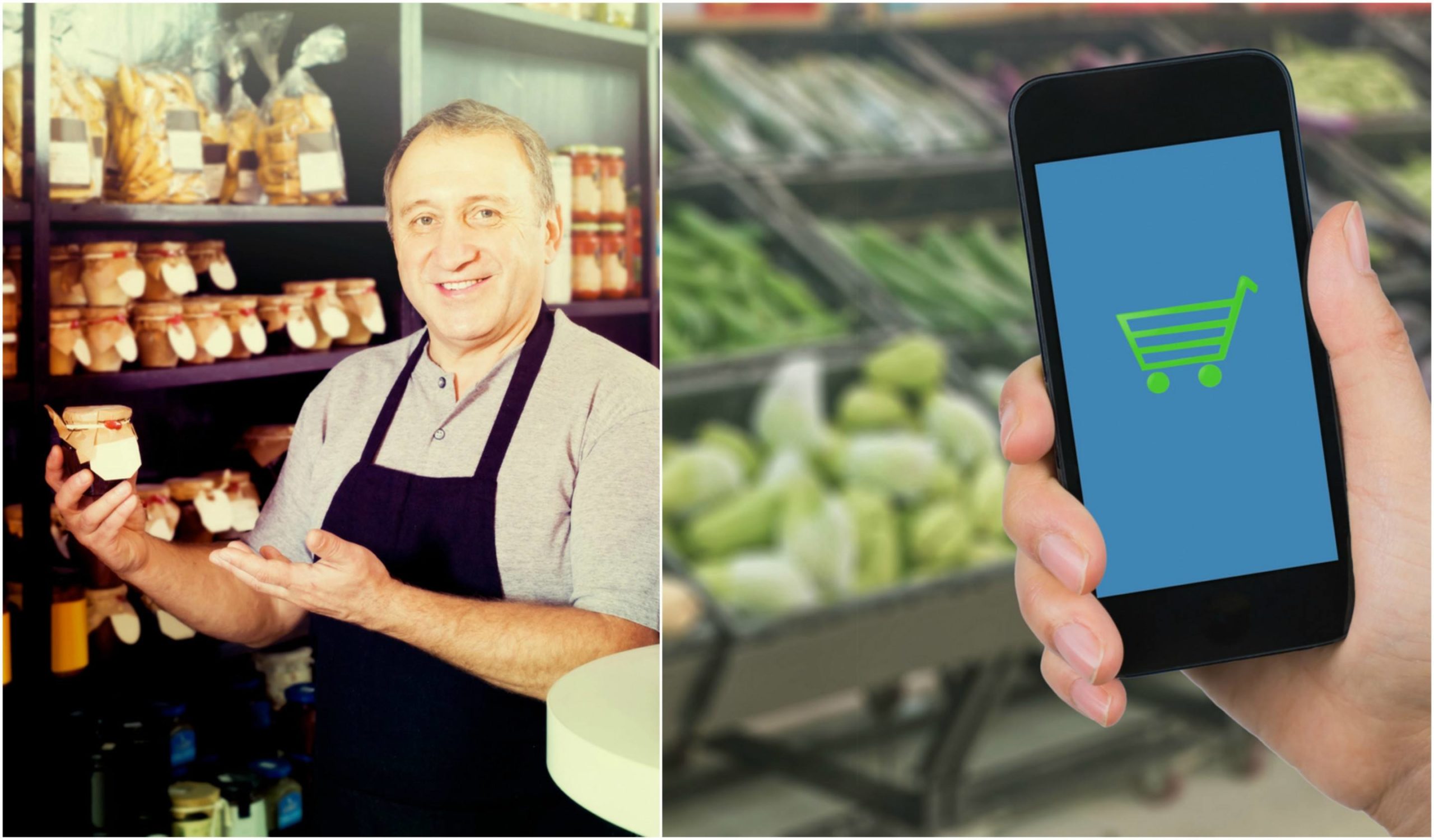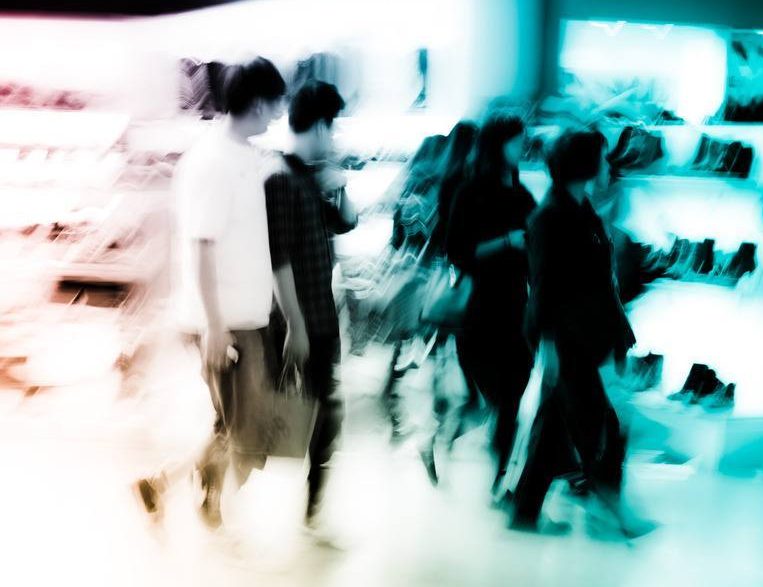
Back To The Future In Retail Tech
January 19, 2017 by guest author, Jeff Doud
Guest Post: Stuart Armstrong, ComQi
In an odd twist, a massive high-tech investment in omni-channel, big data and IoT is taking retailers back to the future – back to something they used to know and do well: creating relationships with their customers.

Stuart Armstrong
Older generations grew up knowing their local grocer. Their butcher. Their druggist. It was personal. They knew their customers’ needs and met them, and business was built and ran on word of mouth – the original social media.
Then the pendulum swung, and retailers lost touch with their customers because of mass merchandising and big media. Brands and advertisers developed the theory of reach and frequency, and built a whole economic structure around mass media that went like this: Bombard enough people with messages, and the relatively small percentage of individuals who respond to the messages will be enough.
Today, soulless high technology is, ironically, getting retailers back to that old level of intimacy they once had with individual customers. We may be using technology and Internet of Things (IoT) to get there, but in the end, retail is a high-touch story, not a high-tech story. We’re using purchase histories and data analysis to re-establish that relevance and recency.
The more we can relate to consumers at a specific time with relevant information, the greater share of mind we gain, and the greater the opportunity to influence purchases.
Three Big Changes
There’s been a wave of change in the past five years, notably in three areas:
- BYOD (Bring Your Own Device) – Smartphones are now ubiquitous, and 40% of shoppers now want to use those devices when they’re shopping to compare prices, scan QR codes, and look up alternatives. That’s changed the in-store experience and dynamics. Now that people can shop anytime, anyplace, retailers and brands know they need to be present in the digital space, as well.
- Endless Aisles – Retailers are trying to do more with less – offer more variety, greater selection, better experiences, but with less square footage. This means smaller on-site inventory and fewer back shelves. The concept and practical application of endless aisle enables retailers to tell shoppers, “Sure, if we don’t have that here, we can get it for you, with no fuss,” and then deliver in a way that’s fast and convenient.
- The Internet of Things – Sensors, anonymous cameras and mined data (from resources like loyalty systems) all open up the possibilities to influence shopper decisions and boost customer experiences. Between archived and real-time data, messaging can be shaped and triggered based on what’s happening in stores, in that time window, and the general profile of the shoppers who are there.
For example, a shopper goes to a big box electronics store to buy a smartphone. It’s busy, so that shopper checks in at a kiosk by tapping their existing phone, or maybe a loyalty card, to the kiosk. That check-in notifies a sales associate, who then has information in front of them that shows the purchase history and plans for phones. That means the associate understands the shopper’s likely needs and interests at the start of the conversation. It’s naturally going to lead to a better experience and service delivery.
Using technology and data to deliver customer service like this can bring retailers closer to the kind of relationship the grocer or butcher had with customers back in the days before smartphones. The more customers know and trust sellers, the more information they will be willing to share, and the higher likelihood browsing converts to buying.
The In-Store Brand Experiences
Brands are building stronger presence in stores using the “store within a store” concept. Fashion brands have done this for years in department stores, and consumer packaged goods and cosmetics brands do it in grocery and drug stores, mainly with displays.
But now we’re seeing brands branching out into other kinds of venues.
Remember that smartphone purchase? The last time I bought a smartphone, my sales associate walked me over to the manufacturer’s display and introduced me to Sally.
“Sally will show you how to use your phone,” he said, and for the next 20 minutes, Sally did exactly that. Sally worked for the phone manufacturer, and she was servicing, not selling.
The twist – because she was doing a great job of servicing, she really was selling.
The old way of bringing people into stores was mass mailings that marketers knew would be ignored and tossed by 99% of the recipients, but WOULD bring in perhaps 1% that would then move the sales needle.
Now, marketers are starting to target stores where they have particular opportunities to grow sales, and investing larger amounts of money in those locations to offer the kinds of information and services that bring people in, and make them want to come back.
Digital Signage In Retail Environments
Screen-rich environments are playing a big part in the increasingly interactive store shopping experience:
- “Public screens” deliver one-to-many messages. You find these on the aisle, over the aisle, or even worked into the décor as part of the millwork; they don’t have to be a “screen on a stick”;
- “Private screens” deliver one-to-one messages and are the best vehicle for customer service. These are the mobile phone screens or interactive touchscreens where individual shoppers can download information and receive personalized offers, support or instruction.
Some screens can do double duty. ComQi recently helped roll out a digital price board in the automotive service sector that doubles as a “video on demand” screen.
Suppose a customer comes in for an oil change, and has to decide between regular and synthetic oil, without knowing much about either. A sales associate might or might not know the answer, or provide one that’s ineffective. But that video on demand screen can instantly load and present a 90-second video that explains the difference – saying exactly what the customer wants to hear, and exactly how the auto services brand wants to say it.
It’s the sort of tool that would be powerful across many venues and circumstances. Think how hard it can be to make good decisions in a grocery’s big wine section – when nearby staff may or may not know anything about wine.
It’s important to note that direct person to person service, or great tools like this that are supporting sales, can dramatically increasing sales and spur trading up on purchases. Simply put, if you know why you should pay more for better, there’s a good chance you will.
Finally, screens are not monolithic, dumb drones. They’re smart, and they offer flexibility to shoppers. That synthetic oil explainer video can be downloaded to a smartphone, from the screen, for future reference. That screen can also be multi-lingual. Suppose the motorist has Spanish as a first language. Then one touch can change the explainer video to a version delivered in Spanish.
Interactivity, and delivering experiences that are just functional, or big and memorable, can drive tangible returns. The high-end Burberry apparel brand designs and executes some of the best examples in retail of screen interactivity. At a London flagship, they’ve created an entirely new shopping environment that drives shopper’s senses and emotions through big, immersive digital visuals and sound. Imagine shopping for a famed Burberry raincoat, and the store erupts in thunder and virtual rain pours down the store’s video walls.
There’s a similarly great use of digital screens in the Victoria’s Secret Herald Square store in New York. Using a set-up powered by ComQi’s EnGage software platform, the store’s visuals include a 3-storey video wall, with synchronized screens that seemingly follow shoppers up and down the escalators.

The Digital Store Is Steadily Evolving
The digital elements of retail’s bricks and mortar environments will continue to evolve.
They’ll get steadily smarter, as more and more data comes available, gets harmonized and then used to trigger and tailor messaging to the shoppers. There’s a fine line between personalization and invasion of privacy, but smart retailers will know how to stay on the right side.
The display canvas will change as new technologies come into the market. Already, the LED technology that used to clad the outsides of big retail spaces is coming indoors – with higher resolution (what are called “fine pixel pitch”) LEDs being used as video walls, replacing LCD versions.
There will be more wearables, used as tools by store staff to better serve customers – because they’ll have shopper purchase histories, buying habits and other data on their wrist, or showing up in front of them through smart glasses.
There will also be more a relationship between the little screens in our hands and the big ones around the stores – using augmented reality to provide deeper details and tips, and tools such as NFC tags and bar codes to allow shoppers to seamlessly load information from the big screen, to their phone.
High Tech Is High Touch
Smart retailers know applying technology in a retail environment is not about the tech itself. It’s about what’s done with it. If retailers can use all that amazing technology and data to improve the shopper experience and build relationships, that’s the high touch solution that will drive sales and loyalty



Leave a comment